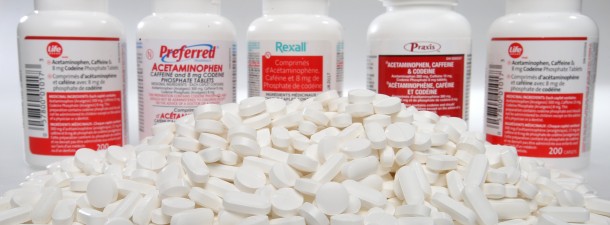Health Canada is taking additional steps to minimize the risk of liver damage and improve acetaminophen safety. This action is in light of a Health Canada review that assessed acetaminophen and liver injury in the Canadian context, a summary of which is available on Health Canada’s website.
Acetaminophen is an ingredient found in a wide range of non-prescription and prescription products, including headache and pain remedies, allergy medicines, cold remedies, and narcotic pain relievers. With hundreds of different products available and over 4 billion doses (e.g., tablets) sold each year, it is one of the most commonly used pain and fever relievers in Canada.
While it is used safely by a vast majority of consumers, acetaminophen – like most health products – has risks, especially if too much is taken or if it is taken for longer then directed. Effects can include liver damage and, in severe cases, acute liver failure, which can be fatal. Acetaminophen is the leading cause of serious liver injury in Canada and in other countries such as the United States, the United Kingdom and Australia. Of the more than 250 cases of serious liver injury each year in Canada involving acetaminophen, over half involved accidental overdose.
In 2009, Health Canada added stronger warnings to the labeling standard for non-prescription products on the risk of liver damage. Health Canada will be taking additional steps in the coming months to further improve acetaminophen safety. Specifically, Health Canada will strengthen the acetaminophen labeling standard for non-prescription products including:
- adding a drug facts table that will provide safety information in an easy-to-read format; and
- using plainer language, so that consumers can more easily identify products that contain acetaminophen, understand the liver risks and use the products as directed.
The department intends to post the draft revised standard for comment later this summer.
As well, working with patient safety groups, health professionals, industry and other stakeholders, the department will initiate a collaborative education approach to increase awareness of the risks and remind Canadians about the safe use of acetaminophen.
A technical discussion with stakeholders is planned for fall 2015 that will help inform Health Canada’s assessment of additional risk minimization options as it determines the path forward. These options include:
- decreasing the maximum recommended daily dose (which is currently 4 grams per day);
- decreasing the unit dose for some products; and
- requiring all children’s products be supplied with a dosing device to prevent the risk of dosing errors (certain but not all children’s products are currently subject to this requirement).
Canadians will be kept informed of new actions to improve the safe use of acetaminophen.
What you should do
- Always read the product label and follow the instructions. Know if the product contains acetaminophen, the amount to take, how frequently to take it, and when to stop. Never exceed the maximum daily dose.
- Avoid taking more than one acetaminophen product at a time. Acetaminophen is in many products and you could accidentally take too much if you’re using more than one product at the same time.
- Talk to a health professional if you have any questions about acetaminophen. Talk to a health professional before taking acetaminophen if you have risk factors that increase your risk of liver damage, such as liver disease or drinking alcohol regularly, as the amount of acetaminophen you can safely take may be less than what is recommended on the label.
- More information for consumers on acetaminophen safety is available in Health Canada’s website.
Report health or safety concerns
To report a side effect to a health product to Health Canada:
- Call toll-free at 1-866-234-2345







No Comments
Comments for Health Canada taking new action to improve acetaminophen safety, reminds Canadians about safe use are now closed.